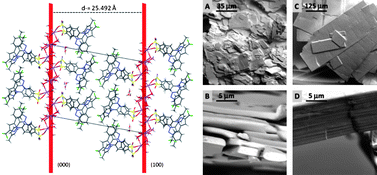Celecoxib sodium salt: engineering crystal forms for performance†
Abstract
Crystalline

- This article is part of the themed collection: Crystal Growth
* Corresponding authors
a
TransForm Pharmaceuticals, 29 Hartwell Ave, Lexington, MA, USA
E-mail:
Julius.Remenar@alkermes.com
Fax: +1 781-609-5855
Tel: +1 781-609-6684
b
TransForm Pharmaceuticals, 29 Hartwell Ave, Lexington, MA, USA
E-mail:
petersom@amgen.com
Tel: +1 617-444-5267
c
Brandeis University, Dept. Of Chemistry, Waltham, MA, USA
E-mail:
Foxman1@brandeis.edu
Fax: +1 781-736-2516
Tel: +1 781-736-2532
Crystalline

 Please wait while we load your content...
Something went wrong. Try again?
Please wait while we load your content...
Something went wrong. Try again?
J. F. Remenar, M. D. Tawa, M. L. Peterson, Ö. Almarsson, M. B. Hickey and B. M. Foxman, CrystEngComm, 2011, 13, 1081 DOI: 10.1039/C0CE00475H
To request permission to reproduce material from this article, please go to the Copyright Clearance Center request page.
If you are an author contributing to an RSC publication, you do not need to request permission provided correct acknowledgement is given.
If you are the author of this article, you do not need to request permission to reproduce figures and diagrams provided correct acknowledgement is given. If you want to reproduce the whole article in a third-party publication (excluding your thesis/dissertation for which permission is not required) please go to the Copyright Clearance Center request page.
Read more about how to correctly acknowledge RSC content.
 Fetching data from CrossRef.
Fetching data from CrossRef.
This may take some time to load.
Loading related content
